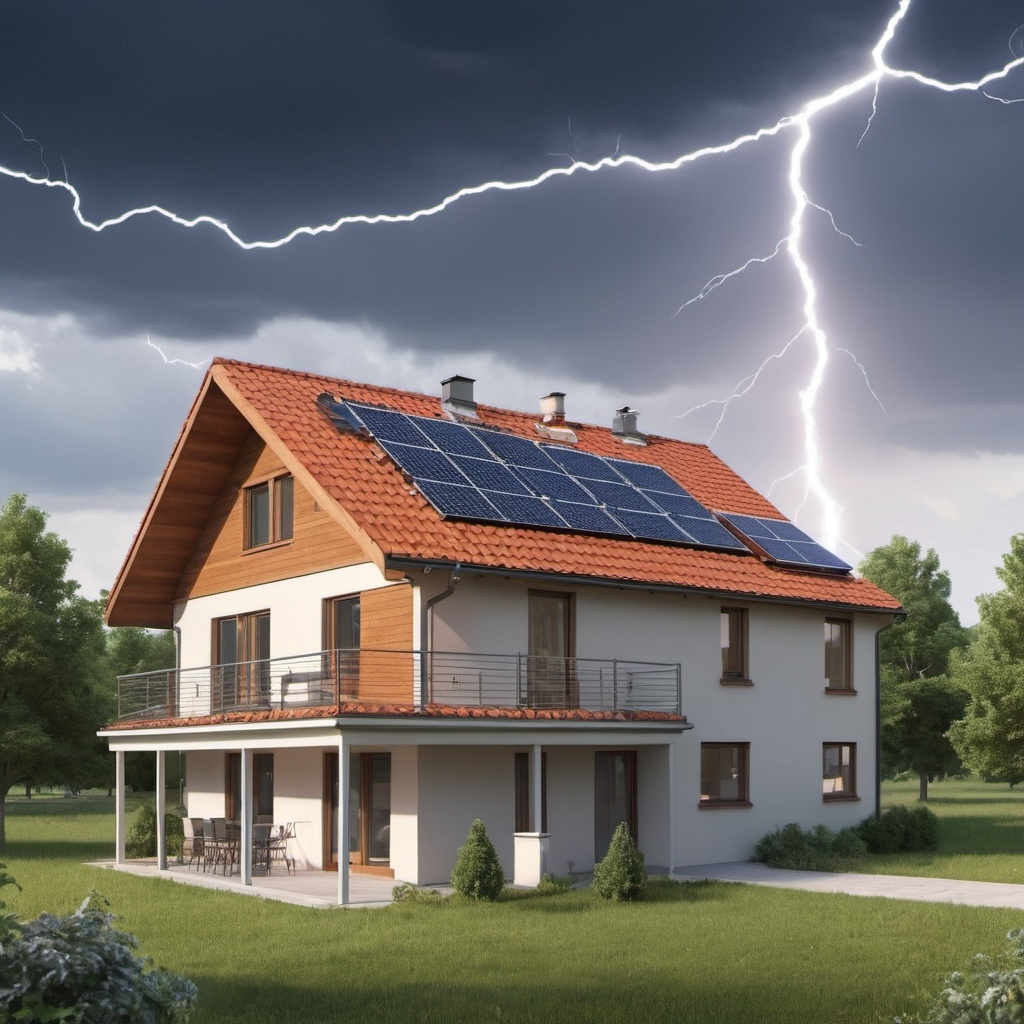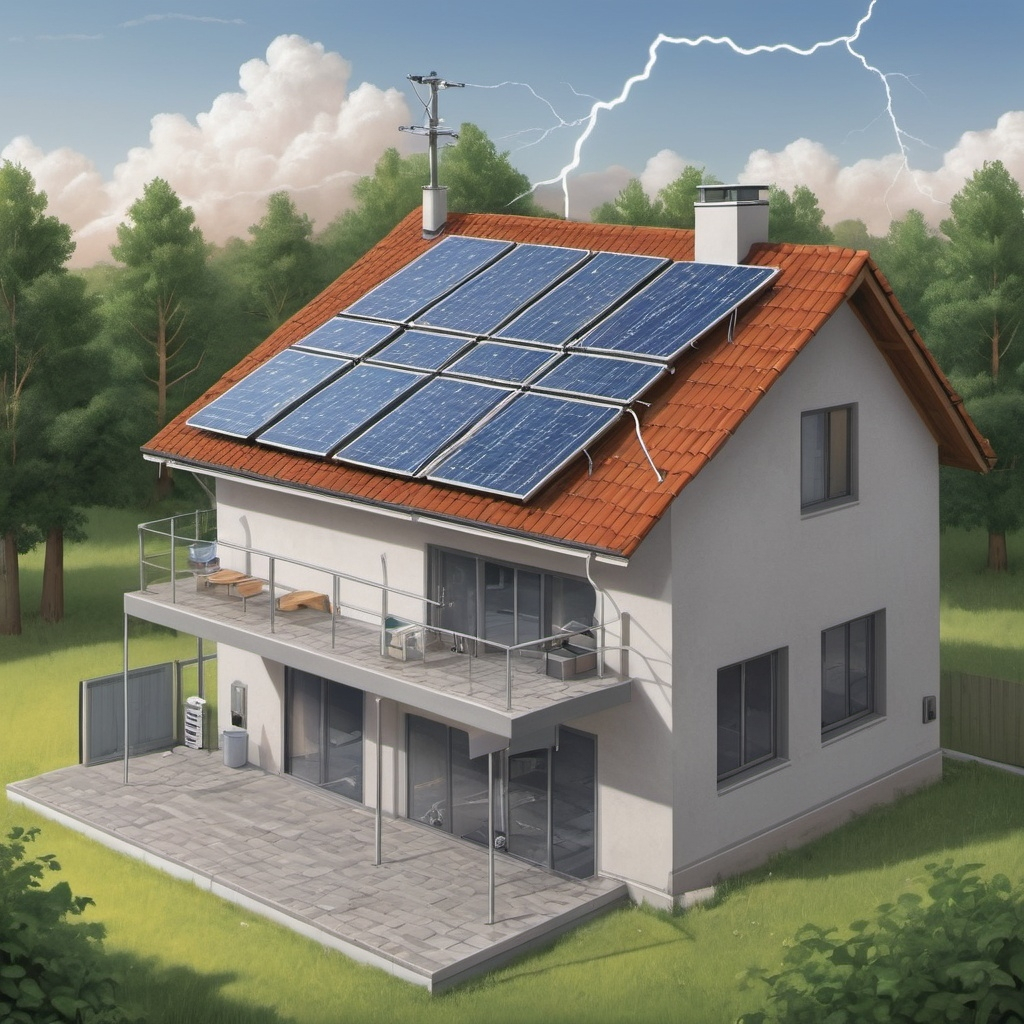Sut i Osod Rodiau Daear a Wifrau ar gyfer Diogelwch Trydanol
Canllaw Cam wrth Gam i Osod Gwiail sylfaen a Wifrau yn Eich Cartref
 Mae gosod rodiau gwreiddiol a wifrau gwreiddiol yn bwysig iawn i gadw system drydanol eich cartref yn ddiogel. Mae gwreiddio priodol yn helpu i ddiogelu yn erbyn siociau trydanol, codiadau pŵer, a thrawiadau mellt. Mae'n atal niwed i'ch dyfeisiau ac yn cadw eich teulu yn ddiogel.
Mae gosod rodiau gwreiddiol a wifrau gwreiddiol yn bwysig iawn i gadw system drydanol eich cartref yn ddiogel. Mae gwreiddio priodol yn helpu i ddiogelu yn erbyn siociau trydanol, codiadau pŵer, a thrawiadau mellt. Mae'n atal niwed i'ch dyfeisiau ac yn cadw eich teulu yn ddiogel.
Os ydych chi'n uwchraddio cartref hen neu'n gosod system wreiddiol newydd, mae'n bwysig gwybod sut i osod rodiau gwreiddiol. Mae angen i chi hefyd ddysgu sut i gysylltu wifrau gwreiddiol â'ch panel trydanol.
Yn y canllaw hwn, byddwn yn dangos i chi sut i gysylltu wifren â rod gwreiddiol. Byddwn hefyd yn esbonio'r camau ar gyfer gosod rodiau gwreiddiol ar gyfer gwasanaeth 200 amp. Yn olaf, byddwn yn cwmpasu sut i osod rodiau gwreiddiol yn ddiogel a dilyn codau trydanol .
Pam mae Gwreiddio Eich System Trydanol Mor Bwysig
 Mae system drydanol wedi'i gwreiddio'n iawn yn hanfodol ar gyfer eich diogelwch. Heb system gwreiddio sy'n gweithio, gall trydan ychwanegol o ddirgryniadau pŵer neu drymiau niweidio dyfeisiau. Gall hefyd achosi tân neu siociau trydanol.
Mae system drydanol wedi'i gwreiddio'n iawn yn hanfodol ar gyfer eich diogelwch. Heb system gwreiddio sy'n gweithio, gall trydan ychwanegol o ddirgryniadau pŵer neu drymiau niweidio dyfeisiau. Gall hefyd achosi tân neu siociau trydanol.
Mae rodiau gwreiddio yn rhan bwysig o'r system hon. Maent yn creu ffordd ddiogel i egni trydanol fynd i'r ddaear. Dyma sut i osod rodiau gwreiddio ar gyfer eich system drydanol.
I ddechrau, bydd angen i chi osod rodiau gwreiddio'n ddwfn yn y ddaear i wneud cyswllt uniongyrchol â haenau cynhenid y ddaear. Yn dibynnu ar eich system drydanol a codau lleol gofynion, efallai y bydd angen i chi un neu fwy o rodiau. Ar gyfer cartrefi mwy gyda gwasanaeth 200 amp, mae'n gyffredin gosod rodiau gwreiddio lluosog wedi'u lleoli o leiaf chwe troedfedd ar wahân.
Pan fyddwch yn gosod rodiau daear, mae'n bwysig dilyn codau trydanol ar gyfer gosodiad diogel a chydymffurfio. Gall codau lleol gael canllawiau penodol ar gyfer y dyfnder isaf a lleoliad y rodiau.
Cam 1: Dewiswch y Rodiau Daear Cywir
Mae deunydd y rodiau daear yn bwysig. Yn gyffredinol, mae pobl yn defnyddio rodiau copr neu rodiau dur galfanedig.
Mae pobl yn cydnabod rodiau daear copr am eu dygnwch a'u cynhwysedd trydanol rhagorol. Os oes gan eich cartref anghenion trydanol uwch, fel gwasanaeth 200 amp, efallai y bydd angen rodiau lluosog arnoch. Am edrych fanwl ar opsiynau rodiau daear, cyfeiriwch at y Cod Trydanol Cenedlaethol am ganllawiau ar ddewis y deunyddiau cywir.
Cam 2: Gosod Rodiau Daear – Y Sylfaen
Dechreuwch trwy ddewis y lleoliad cywir ar gyfer eich rod daear ger eich panel trydanol. Gosodwch y rod mewn ardal gyda phlanhigion gwlyb am gynhwysedd trydanol gwell.
Defnyddiwch dyfais neu offeryn arbennig i wthio'r rod i'r ddaear. Gwnewch yn siŵr bod brig y rod o leiaf 18 modfedd o dan y wyneb. Os byddwch yn dod ar draws pridd creigiog, efallai y bydd angen i chi ddefnyddio rod hwy neu dyllu twll dyfnach.
Unwaith y bydd y rod yn ei le, bydd angen i chi gysylltu gwifren â'r rod daear. Fel arfer, mae trydanwyr yn defnyddio gwifren copr noeth ar gyfer y cysylltiad hwn. Sicrhewch y gwifren gyda clamp daear , gan sicrhau eich bod yn ei gysylltu'n dynn i osgoi unrhyw gysylltiadau rhydd.
Cam 3: Cysylltu'r Rod Daear â'r Panel Trydanol
Y cam nesaf yw cysylltu'r gwifren daear o'r rod daear â'ch panel trydanol. Y tu mewn i'r panel, darganfyddwch y bar bus daear sy'n cysylltu'r holl wifrau daear. Cysylltwch y gwifren daear yn ddiogel i'r bar bus, gan ddilyn codau trydanol ar gyfer gosod cywir.
Ar gyfer cartrefi gyda gwasanaeth 200 amp, gwnewch yn siŵr bod y mesur a'r hyd y gwifren yn addas ar gyfer y llwyth. Gall trydanwr proffesiynol sicrhau'r cysylltiad cywir a chydymffurfio â chodau trydanol.
Cam 4: Sut i Osod Rodiau Daear ar gyfer Gwasanaeth 200 Amp
Mae cartrefi gyda gwasanaeth 200 amp yn aml yn gofyn am fwy nag un rod daear ar gyfer daeariad digonol. Yn yr achos hwn, bydd angen i chi leoli'r rodiau o leiaf chwe troedfedd ar wahân i gydymffurfio â'r codau trydanol. Gwnewch yn siŵr bod pob rod yn ddigon dwfn i sicrhau cysylltiad cadarn â'r ddaear. Os oes angen, ymgynghorwch KunbPower am gyfarwyddyd ar y gosodiad cywir.
Cam 5: Datrys Problemau a Phrofi Eich System Daeariad
Ar ôl gosod eich rodiau daear a chysylltu'r wifren daear â'r panel trydanol, mae'n bwysig profi'r system i sicrhau bod popeth yn gweithio fel y disgwyl. Defnyddiwch beiriant profi gwrthiant daear i wirio am barhad a gwnewch yn siŵr bod y gwrthiant yn isel. Bydd hyn yn cadarnhau bod y system daeariad yn tynnu'n effeithiol symudiadau trydanol i'r ddaear.
Os nad yw'r system yn perfformio'n iawn, efallai y bydd angen i chi osod rodiau daear ychwanegol neu wirio am corrosion yn y gwifren ddaear. Gall trydanwr trwyddedig helpu i nodi unrhyw faterion gyda'ch system ddaear.
Cam 6: Ddaearu mewn Cartrefi Hynafol
Os ydych chi'n byw mewn cartref hynafol, efallai nad yw eich system drydanol yn cael system ddaear digonol. Mewn llawer o achosion, ni oedd angen nac yn defnyddio rodiau daear mewn cartrefi hynafol. Mae gosod neu uwchraddio system ddaear yn hanfodol i sicrhau diogelwch eich cartref.
Efallai bod cartrefi hynafol hefyd â phaneli trydanol hen ffasiwn y gallai perchnogion cartrefi fod angen eu disodli neu eu huwchraddio i gydymffurfio â'r codau trydanol cyfredol. Sicrhewch bob amser bod eich system yn cydymffurfio â gofynion codau lleol ar gyfer y diogelwch gorau.
Cam 7: Cynnal Eich System Ddaear
Unwaith y byddwch wedi gosod eich rodiau daear a gwifrau daear, dylech berfformio cynnal a chadw rheolaidd. Gwiriwch eich system yn gyson am arwyddion o wisgo, corrosion, neu ddifrod. Os byddwch yn sylwi ar unrhyw faterion, disodliwch y gwifren daear neu'r rodiau fel y bo angen. Bydd hyn yn helpu i gadw eich system yn gweithio'n effeithlon ac yn ddiogel am flynyddoedd lawer i ddod.
Casgliad: Gwneud yn Ddiogel y System Trydanol yn Eich Cartref
Mae gosod rodiau daear a gwifrau daear yn gywir yn gam pwysig wrth ddiogelu eich cartref rhag peryglon trydanol. P'un a ydych yn adeiladu system drydanol newydd neu'n gwella un hen, mae dilyn y camau cywir yn bwysig. Mae hyn yn sicrhau bod eich system yn cwrdd â'r cod ac yn gweithio'n dda.
Trwy ddysgu sut i osod rodiau daear a chysylltu gwifrau â hwy, gallwch ddiogelu eich cartref. Mae hyn yn helpu i amddiffyn yn erbyn symudiadau trydanol, taro mellt, a pheryglon eraill. Siaradwch bob amser â phroffesiynol os ydych yn ansicr am eich system daear. Gallant helpu i sicrhau ei bod yn cwrdd â rheolau lleol a chadw eich cartref yn ddiogel. neu cysylltwch â ni am gymorth www.kunbpower.com

